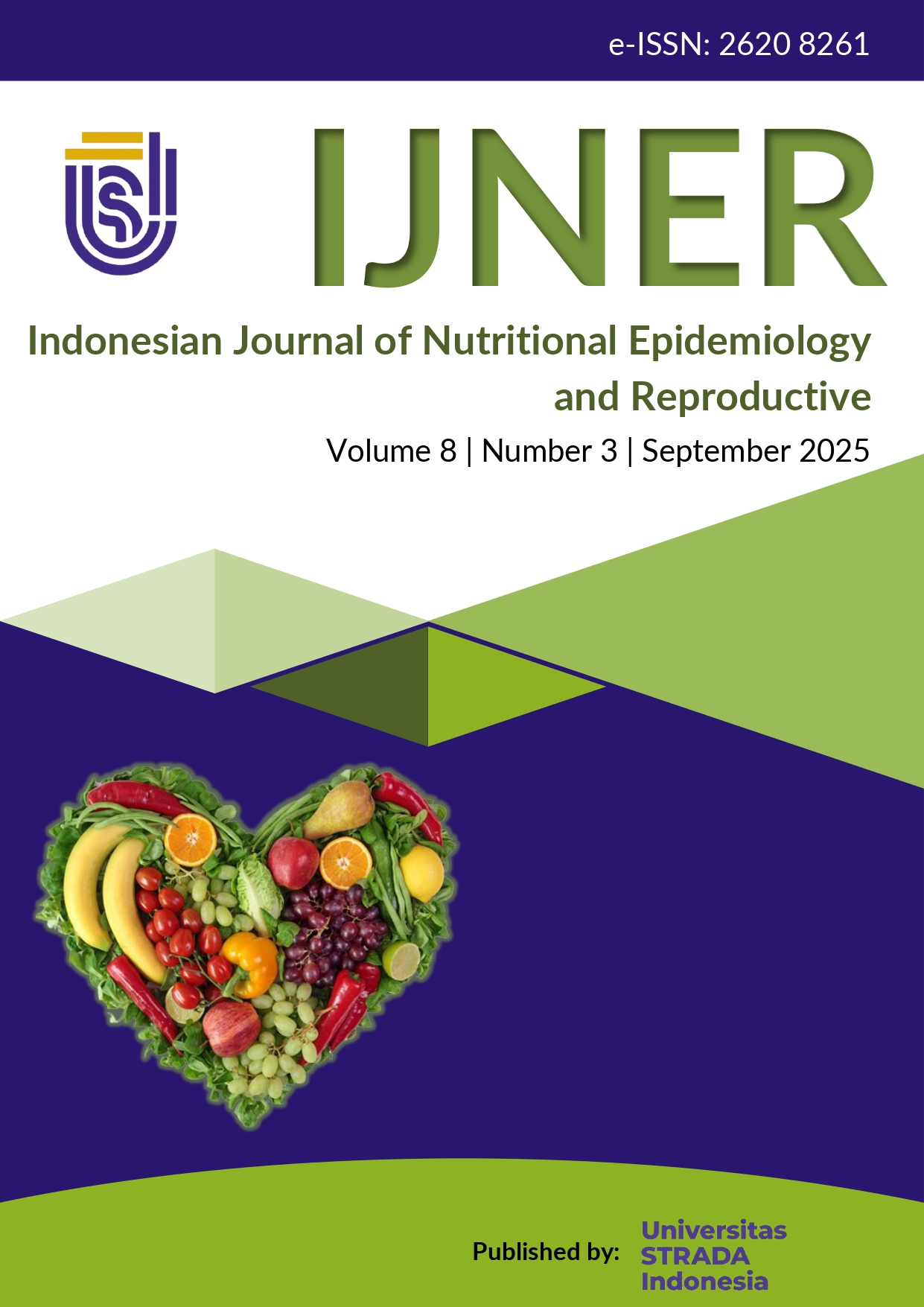Overview Of Nutritional Care For Patients with Hepatic Cirrhosis with Ascites, Hypoalbuminemia and Malnutrition in Kudus
DOI:
https://doi.org/10.30994/ijner.v8i3.346Keywords:
Ascites, Hepatic cirrhosis, Malnutrition, Nutrition care processAbstract
Hepatic cirrhosis is a chronic condition characterized by progressive liver damage, widespread fibrosis, and the formation of regenerative nodules that disrupt normal liver structure. Common complications that often occur are ascites, hypoalbuminemia, and protein-energy malnutrition. The aim of the research is to determine the description of nutritional care which includes assessment, diagnosis, intervention, monitoring and evaluation in patients with liver cirrhosis with ascites, anemia and malnutrition at RSUD dr. Loekmono Hadi Kudus. This research is a case report or case study report by observing for 4 days in July 2025. Data collection by means of interviews, observations, measurements and calculations. The data obtained is presented in tables and analyzed descriptively. The nutritional intervention provided is 1755 kcal protein 70.2 grams fat 39 grams carbohydrates 281 grams, decreased sodium and increased protein diet ,texture modified diet, meal schedule 3 x main meals 1 x extra egg white interlude 3 x days, oral route. Theresults of the study showed that monitoring and evaluation of the patient's consumption level increased according to the target (> 80% of requirements), anthropometrically there was no weight loss, there was an improvement in biochemical values (hemoglobin, erythrocytes, hematocrit, leukocytes) but albumin values decreased. Monitoring physical examination evaluation showed symptoms of weakness, ascites, jaundice on the skin, and the abdominal area had improved. Monitoring clinical examination evaluation of blood pressure, pulse, respiratory rate, SPO2, body temperature has improved. At the end of the intervention, nutritional diagnosis NC 4.1.2 malnutrition, chronic disease status is still active, nutritional diagnosis NI 5.3 decreased nutritional requirements (sodium) is resolved.











